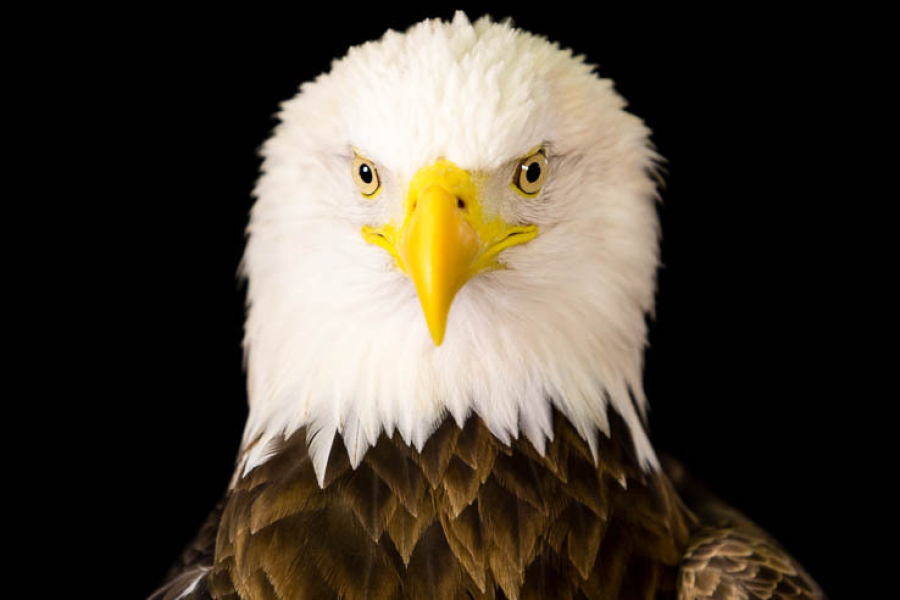5 reasons bald eagles are wild about the Chesapeake Bay watershed

The population of bald eagles in the Chesapeake Bay watershed has soared in the past decade, leaping from just 60 breeding pairs in the 1970s to approximately 3,000 in 2021. This recovery story is without a doubt due to a ban placed on the pesticide DDT, as well as active wildlife management across the region. But now that the birds are back, there are several other reasons why our estuary is a go-to spot for bald eagles.
Access to forested shorelines
According to Craig Koppie, fish and wildlife biologist and raptor specialist with the U.S. Fish and Wildlife Service, bald eagles want quiet, undisturbed blocks of forest along the water where they can make their nests and spend the day fishing. They can find this along the shorelines of the Bay and its tidal tributaries. In particular, sections of the eastern and western shores of the Bay, plus the James, Potomac and Rappahannock rivers are currently hotspots for bald eagles because of their forested shorelines. The tall evergreen tree loblolly pine is the bald eagle's tree of choice: 60% of the local species choose them for nesting.
A diverse menu of fish to feed on
Because the Chesapeake Bay is an estuary—meaning that it has a mix of fresh water from the rivers and saltwater from the ocean—it has a wide variety of fish species that make for a healthy, balanced bald eagle diet. The James River, for example, begins as freshwater upstream of Richmond, Virginia and shifts to saltwater over a shorter distance than other major Chesapeake tributaries. This means an eagle can feed on a wide variety of fish close to its nest.
Fishing is easier in shallow waters
Most estuaries are relatively shallow, and the Chesapeake Bay is no exception. Its average depth, including all tidal tributaries, is about 21 feet. As you can imagine, this makes fishing easier for species such as bald eagles. Throughout the Bay, bald eagles have an easy time peering through the water and diving in to catch a fish with their talons.
Wildlife refuges keep their habitat safe
According to Koppie, the National Wildlife Refuge System began purchasing areas for the protection of bald eagles in the 1960s. Today, dozens of wildlife refuges across the watershed safeguard space for bald eagles to nest and fish. Some of the bigger ones in the watershed include Mason Neck National Wildlife Refuge along the Potomac River, Rappahannock National Wildlife Refuge and Aberdeen Proving Ground, both on the western side of the Bay, and Blackwater National Wildlife Refuge on the eastern side in Dorchester County, Maryland—the county with the largest breeding populations in the region.
Wildlife managers have their back
Over the past several decades, a number of wildlife managers have been diligently working to make sure bald eagles can successfully nest and reproduce. As far north as Otsego Lake in Cooperstown, New York, scientists scale tall trees to band and monitor nesting bald eagles to make sure the population is stable. Closer to the Bay in Maryland and Virginia, limits have been set on how close to a nest development can occur, as well as restrictions against construction during nesting and mating seasons.
What makes the Bay great for bald eagles is also what makes the Bay great for other wildlife, as well as people. The same forested shorelines make ideal habitats for osprey and great blue herons. The diversity of fish is enjoyed by anglers recreating in rivers or the Bay itself. Wildlife refuges and other preserved lands make wonderful places for hiking and kayaking. All these things make the Bay a great place to live, for people and bald eagles alike.

Comments
These Eagles are so beautiful. I can fully understand how they became out National Symbol. I pray we always protect them and never lose them to distinction. God bless and protect these fabulous birds.
Thank you!
Your comment has been received. Before it can be published, the comment will be reviewed by our team to ensure it adheres with our rules of engagement.
Back to recent stories